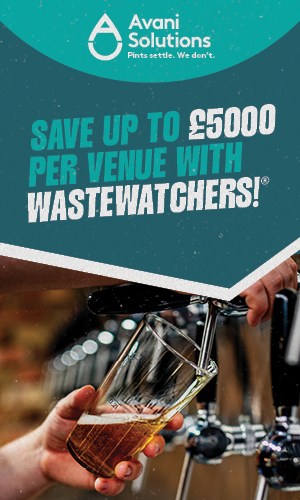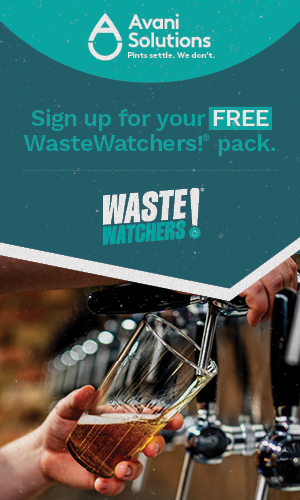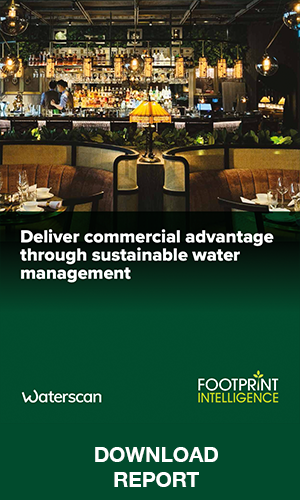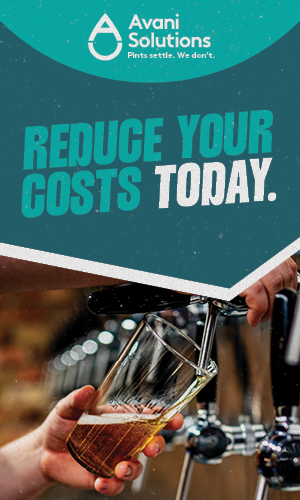More bans on single-use items and new reusable packaging targets have got industry spooked. David Burrows reports.
The European Commission has proposed new targets for reusable packaging, bans on single-use packaging when dining in and a reduction in plastic packaging waste. Foodservice businesses and their suppliers are not happy about the prospect.
Matti Rantanen, director general of the European Paper Packaging Alliance (EPPA), said the plans are “disappointing” and “will lead to dire consequences on the environment, the economy and consumers”. In a tweet, 360° Foodservice, which represents the foodservice packaging sector, welcomed the publication of the proposed revision of the EU legislation on packaging and packaging waste, but not the content. “Achieving a new balance in the way food and drinks are served in single-use and reusable containers requires careful preparation, progressive introduction and feasible timelines.” Things are moving too far and too fast, it said.
So, let’s unpack it a little (there will be a lot more to do in the coming weeks given that it’s a 118-page document, plus 36 pages of annexes and 769 pages of impact assessments).
The headline target is to reduce packaging waste by 15% by 2040 per member state per capita, compared to 2018. This would lead to an overall waste reduction in the EU of 37%. Carry on as we are and packaging and plastic packaging waste could rise 19% and 46% respectively by 2030, the commission warned.
However, it’s the bans and restrictions on single-use that’ll be giving foodservice companies the sweats – and not just those in the EU, either, because Scotland and Wales have promised to align with such new green rules (as the former already has with the single-use plastics directive).
Fast (food) fury
Article 22, annex V, sets out restrictions for single-use packaging in the Horeca (hotel, restaurant, café, and catering) sector. This includes a ban on single-use packaging for food and drink filled and consumed on the premises, as well as single-use packaging for individual servings of everything from condiments and creamers to sugars and seasoning.
The miniature shampoo and shower gel bottles still often found in hotels must also be banished. Single-use packaging for fruit and veg will also be ditched, which has proved a controversial idea when proposed by Wrap here in the UK. According to the commission, these items of packaging are all “clearly unnecessary”. That the scope is all packaging rather than just plastic is significant.
Hospitality lobby group Hotrec told Politico that a ban would “require a full cost analysis of businesses in particular energy, water and operational costs,” adding that the cost of those assessments shouldn’t fall to the businesses. The EPPA also cried foul: the restrictions go against the rules in the waste directive, the group said, because they don’t consider the full life cycle impact of all packaging products. The commission ignored the life cycle assessments (paid for by EPPA) that show reusable isn’t the best solution for the environment, said the group – whose raison d’etre is to “find concrete solutions to increase recycling and to reduce carbon emissions of food and foodservice packaging”, not get bogged down with reuse.
Targets on reusable packaging (article 26) have been lowered compared to earlier leaked drafts. The published targets are for 20% of hot and cold drinks, 10% of takeaway food and 10% of alcoholic drinks to come in reusable or refillable packaging by 2030. Far steeper targets are planned for 2040: by then, 80% of hot and cold beverages will need to be sold in reusable packaging, 20% of alcoholic drinks and 40% of takeaway meals. “There will also be some standardisation of packaging formats and clear labelling of reusable packaging,” the commission said (which will undoubtedly help with scaling the systems). Marking, such as QR codes, will also be necessary in order to provide people with “the relevant information facilitating its reuse”.
The requirements for reuse and refill systems are set out in articles 23-25 and annex VI, but 360° warned of “unscrupulous players rushing to set up low quality, unsafe and unsustainable reuse systems that would discredit reuse”. Those lobbying for the status quo in single-use are clearly reaching for the ‘safety’ card again (much as they did during the height of the covid pandemic). Professor Chris Hilson from the University of Reading suggested a simple solution: why don’t these industry groups set up high quality, safe and sustainable systems so companies can avoid those unscrupulous players? That wouldn’t be as much fun though, would it. It’s also far too sensible, sustainable and doesn’t rely on single-use.
Worth noting too, is that every piece of packaging will also carry a label showing what the packaging is made of and in which waste stream it should go. New rules on biobased, biodegradable and compostable plastics have also been set out. Industrially compostable packaging for example will only be allowed for tea bags, filter coffee pods and pads, fruit and vegetable stickers, and very light plastic bags. The news was welcomed by European Bioplastics, which represents the sector and had been concerned by earlier reports of a potential ban on some compostable packaging.
Appliance of science
However, the science behind some of the decisions was questioned with “misconceptions” around land use requirements for biobased materials and a failure to promote biobased content on a similar footing to recycled content from fossil-fuel based plastics. Mandatory targets on recycled content are also in the mix but the levels have yet to be decided. They could be as high as 65% by 2040 for some types of packaging.
Campaigners will (as is their want) suggest all this still isn’t enough. Industry groups meanwhile will continue to demand more science (ideally the stuff they’ve supported and funded). The impact assessment accompanying the proposals shows the commission went for the middle road in its proposals, which risks pleasing no-one.
The bottom line is that the current directive hasn’t worked. Since being introduced in 1994 it has led to overpackaging, increasing amounts of non-recyclable packaging, confusing labelling and very low uptake of recycled content in plastic packaging or reusable packaging – both of which mean considerable losses of valuable resources, a point which disciples of disposables rarely mention.
These rules are therefore progress (if they can be agreed now). As the commission noted, moving towards a more circular economy within packaging would deliver benefits such as “empowering consumers, reducing negative impacts on the environment (including a 35% drop in carbon emissions compared to the 66MtCO2e business as usual scenario) and human health, reducing the EU`s import dependency for raw materials and fossil fuel, stimulating innovation and boosting economic growth, and finally reducing unnecessary household expenditures”. Research by the Rethink Plastic Alliance last year showed scaling up reusable food and beverage containers in the foodservice and hospitality sector by 50% by 2030 could save 2.6MtCO2e and €10.4bn (£9bn), for example.
Disposable disciples
The proposals arrived in a week in which polling of senior packaging specialists at global brands showed their chief concern to be keeping up with legislation. Some 70% are worried they are not aligned with what’s on the horizon. 360° Foodservice said the rules would take away “vital and sustainable single use options”. “We understand the direction of travel, the group said in a statement, but “[we are] concerned that the proposal is going too far too fast”.
Outside England, which continues to dither and delay over its new packaging rules which are as yet nowhere near as ambitious as the ones the EU has set out, the pace of policy making may feel fast and leave some furious, but the other way of looking at it is that companies have been far too slow to react to new ways of doing businesses which can save carbon and cash as well as prove more convenient for customers. These carrots are there; regulators are only reaching for sticks because too few food and drink businesses are grabbing them. More should do so (and more are, as a new report due to be published by Footprint in February 2023 will show). As they do, and these regulations come to pass, the ones facing those ‘dire consequences’ will be the linear economy lobbyists.











Surely a ‘low hanging fruit’ here is wine? Already sold in standard-sized, more or less identical, sturdy and reusable containers – they could be collected and cleaned by the big distributors or by (levy-supported?) businesses existing for that purpose, and the producers would be obliged to use a proportion of reused?